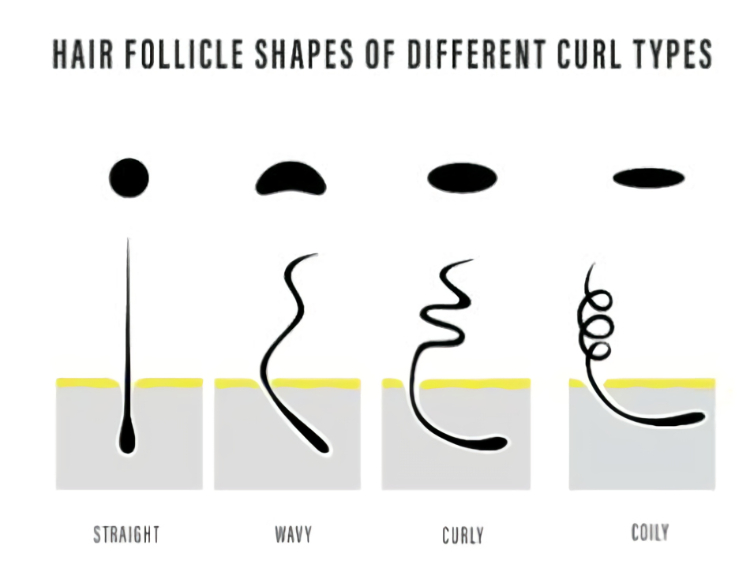Beach waves, gentle waves, curly curls, or corkscrew curls. There are many variations of curly hair. But what determines the structure into which our hair develops? Curls have cultural importance and, in certain cultures, are even seen as the epitome of beauty. 3,100 years before the Common Era, even the ancient Egyptians attempted to curl their hair artificially, as shown by clay curlers discovered by researchers in Egypt. However, not everyone needs curlers and papillotes.
The Curl Is Made by the Follicle
Every hair begins on the scalp, where a hair follicle surrounds a hair root that is embedded in the skin and has a hair shaft that protrudes from the skin. The primary determinant of the structure a hair adopts is the hair follicle from which it emerges.

Keratin protein fibrils are converted into hair in the hair follicle. Because one cysteine, an amino acid that contributes to the formation of keratin, creates a “disulfide bridge” with another cysteine, these keratin fibrils cross-link with one another. The number of these cross-links that develop between a hair’s fibers determines how curly the hair will be.
Forms of Hair
Now, if the keratin fibers are pushed closer together during hair development in the hair follicle by a certain oval and narrow follicle shape, they may generate more disulfide bridges and the hair grows curlier.
On the other hand, when a highly rounded follicle shape hinders the development of many such connections, the hair grows straight. Additionally, the follicular tunnel’s form is important. A straight follicular tunnel promotes smooth hair growth, while a curved follicle tunnel aids in the development of curls.
Does a “Hair Gene” Exist?
Why then do some people have straight hair follicles while others have curved ones? The trichohyalin gene (TCHH), which is read out in the cells of the hair follicles, is thought to be the cause of curly hair.
Scientists believe that Europeans often have smooth hair because of a DNA mutation that assures a certain follicle form. The precise reason for the variation in hair follicle morphology hasn’t yet been definitively determined.
However, the majority of scientists concur that curly hair is mainly inherited. It is quite probable that the children’s hair will be curly if one or both parents have curly hair.
However, the hair structure that is inherited from our genes may change throughout time. Many people have straight hair as children, which starts to curl as they become older, or vice versa. Although there hasn’t been any conclusive study on this one, it is thought that variations in hormone balance may have an effect on hair texture.
Hairstyles Involving Curls, Such As Perms, etc.
As a result, nature comes up with many techniques to curl or wave our hair. But what about the techniques that are used at hair salons when someone wishes to alter the structure of their hair? Conventional curlers change the formation of hydrogen bonds in our hair.
These connections may be broken by the curlers’ heat, which will change the form of the hair. New bonds are created as the hair cools back down in that shape, keeping it there for some time. The process of straightening hair is similar.
However, because of how easily moisture may break these connections, the hair immediately assumes its previous structure. Consequently, trying to artificially straighten or curl the hair on a wet day is often ineffective.
Perming, on the other hand, is a longer-term solution. Strong disulfide bridges that exist between the keratin fibers are broken using so-called reducing agents.
The development of new disulfide bridges is induced by using an oxidizing chemical after the hair has been given the proper shape. The curls endure considerably longer since it is difficult for water to readily dissolve them once again.


